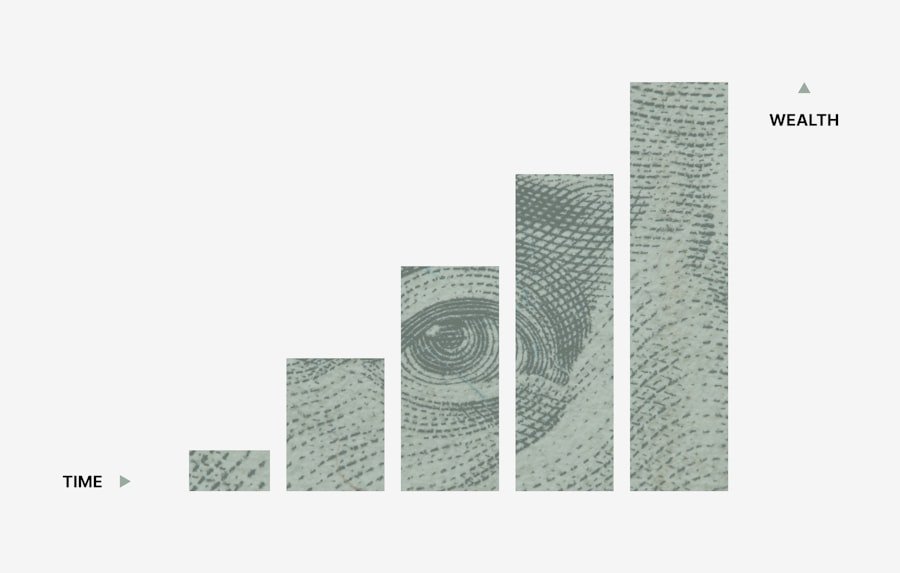Instagram, a widely-used social media platform, has demonstrated significant expansion since its inception in 2010. Focusing on visual content sharing, Instagram has established itself as a major player in the social media industry, drawing in millions of users and businesses globally. The platform’s growth can be attributed to several factors, including its intuitive user interface, continuous feature innovations, and strategic collaborations with other companies and influencers.
This article will examine the initial growth and adoption of Instagram, its swift expansion and user base development, and the key elements that have contributed to its success. Furthermore, we will analyze the obstacles and challenges Instagram has encountered during its growth trajectory, as well as explore future growth projections and emerging trends for the platform. The discussion will cover various aspects of Instagram’s evolution, including its acquisition by Facebook in 2012, the introduction of new features such as Stories and Reels, and its impact on digital marketing and influencer culture.
By examining these factors, we aim to provide a comprehensive overview of Instagram’s growth story and its position in the current social media landscape.
Early Growth and Adoption
Instagram was founded by Kevin Systrom and Mike Krieger in 2010, and within just two months of its launch, the platform had already gained over a million users. The app’s simple and intuitive interface, combined with its focus on sharing visually appealing photos, quickly captured the attention of smartphone users. The early adoption of Instagram was also driven by its integration with other social media platforms, such as Facebook and Twitter, allowing users to easily share their Instagram posts across multiple networks.
This seamless integration helped Instagram gain traction and attract a diverse user base from the outset. Additionally, the platform’s use of hashtags and geotagging features further encouraged user engagement and contributed to its early growth. Overall, Instagram’s early success can be attributed to its innovative approach to visual storytelling and its ability to tap into the growing trend of mobile photography.
In addition to its user-friendly interface and integration with other social media platforms, Instagram’s early growth was also fueled by its appeal to a younger demographic. The platform’s emphasis on visual content and storytelling resonated with millennials and Gen Z users, who were increasingly turning to social media for self-expression and connection. As a result, Instagram quickly became a go-to platform for sharing moments, experiences, and creative expressions, further driving its early growth and adoption.
The platform’s emphasis on authenticity and creativity also set it apart from other social media platforms at the time, making it a preferred choice for users looking to showcase their unique perspectives and experiences.
Rapid Expansion and User Base

Following its early success, Instagram experienced rapid expansion and a surge in its user base. By 2012, just two years after its launch, Instagram had amassed over 100 million users, marking a significant milestone in its growth trajectory. The platform’s user base continued to grow exponentially, reaching 300 million users by 2014 and 500 million users by 2016.
This rapid expansion was driven by several factors, including the introduction of new features such as video sharing, direct messaging, and Stories, which enhanced user engagement and retention. Additionally, Instagram’s strategic partnerships with celebrities, influencers, and brands helped attract new users and expand its reach across different demographics and regions. Furthermore, Instagram’s acquisition by Facebook in 2012 played a pivotal role in its rapid expansion and user base growth.
The acquisition provided Instagram with access to Facebook’s resources, technology, and user base, enabling it to scale its operations and innovate at a faster pace. This strategic move also allowed Instagram to leverage Facebook’s advertising platform, driving revenue growth and further solidifying its position in the social media landscape. As a result, Instagram’s user base continued to soar, reaching one billion monthly active users by 2018, cementing its status as one of the leading social media platforms globally.
Instagram’s Growth Compared to Other Social Media Platforms
Instagram’s growth trajectory has set it apart from other social media platforms in several ways. Unlike traditional text-based platforms like Facebook and Twitter, Instagram’s emphasis on visual content has resonated with users seeking a more immersive and visually engaging experience. This unique positioning has allowed Instagram to carve out a distinct niche in the social media landscape and attract users who may not be as active on other platforms.
Additionally, Instagram’s focus on mobile-first design and seamless user experience has contributed to its rapid growth compared to other social media platforms that may have been slower to adapt to the mobile trend. Furthermore, Instagram’s growth has outpaced that of other visual-centric platforms such as Snapchat, thanks to its broader appeal and continuous innovation. While Snapchat initially gained traction with younger users through its ephemeral messaging and filters, Instagram’s introduction of similar features such as Stories and augmented reality filters helped it attract a wider audience and retain its user base.
This ability to adapt and evolve in response to changing user preferences has allowed Instagram to maintain its growth momentum and stay ahead of the competition in the visual content space.
Factors Contributing to Instagram’s Growth
Several key factors have contributed to Instagram’s remarkable growth over the years. One of the primary drivers of Instagram’s growth has been its focus on user engagement and community building. The platform’s emphasis on visual storytelling, combined with features such as likes, comments, and direct messaging, has fostered a sense of connection and interaction among users.
This focus on engagement has not only attracted new users but also retained existing ones, leading to sustained growth in user activity and content creation. Additionally, Instagram’s strategic partnerships with influencers, celebrities, and brands have played a crucial role in driving its growth. By collaborating with high-profile individuals and businesses, Instagram has been able to expand its reach, attract new users, and increase user engagement through sponsored content and brand collaborations.
These partnerships have also helped elevate Instagram’s status as a platform for aspirational content and lifestyle inspiration, further fueling its growth among diverse demographics. Moreover, Instagram’s continuous innovation and introduction of new features have been instrumental in sustaining its growth momentum. From the launch of video sharing and Stories to the integration of shopping features and IGTV, Instagram has consistently evolved to meet the changing needs and preferences of its user base.
This commitment to innovation has not only differentiated Instagram from other social media platforms but also kept users engaged and excited about the platform, contributing to its sustained growth over time.
Challenges and Setbacks in Instagram’s Growth

Despite its remarkable growth trajectory, Instagram has faced several challenges and setbacks along the way. One of the key challenges for Instagram has been navigating privacy concerns and addressing issues related to user data protection. As a platform that relies heavily on user-generated content and personal information, Instagram has had to grapple with privacy regulations and public scrutiny regarding data security and privacy practices.
These concerns have at times impacted user trust and perception of the platform, posing challenges to its growth and user retention. Additionally, Instagram has had to contend with competition from emerging social media platforms and changing consumer behaviors. The rise of new platforms such as TikTok has presented a competitive threat to Instagram, particularly among younger demographics seeking novel ways to create and consume content.
To stay ahead of the competition, Instagram has had to continuously innovate and introduce new features to retain its user base and attract new users. This ongoing battle for user attention and engagement has posed challenges to Instagram’s growth strategy and required the platform to adapt quickly to evolving trends in social media consumption. Furthermore, Instagram has faced criticism for issues related to content moderation and the spread of misinformation on its platform.
The proliferation of fake news, hate speech, and harmful content has raised concerns about the impact of social media on society and prompted calls for stricter content policies and enforcement measures. Addressing these challenges while maintaining a balance between free expression and responsible content curation has been a complex task for Instagram, requiring ongoing investment in content moderation tools and resources.
Future Growth Projections and Trends
Looking ahead, Instagram is poised for continued growth and evolution as it adapts to changing consumer behaviors and technological advancements. One of the key trends shaping Instagram’s future growth is the rise of e-commerce on the platform. With the introduction of shopping features such as shoppable posts and in-app checkout, Instagram is increasingly becoming a destination for product discovery and shopping experiences.
This convergence of social media and e-commerce presents significant opportunities for Instagram to drive revenue growth while enhancing the user experience. Another trend that is expected to drive Instagram’s future growth is the increasing focus on video content. As video consumption continues to rise across social media platforms, Instagram is investing in video-centric features such as Reels and IGTV to capture this trend.
By prioritizing video content creation and consumption, Instagram aims to stay relevant among users seeking more dynamic and immersive experiences on the platform. Furthermore, Instagram’s expansion into new markets and demographics is expected to fuel its future growth. With a growing user base in emerging markets such as India, Brazil, and Indonesia, Instagram is well-positioned to capitalize on the increasing global adoption of social media.
By tailoring its offerings to diverse cultural preferences and local trends, Instagram can tap into new audiences and drive sustained growth in regions with untapped potential. In conclusion, Instagram’s growth journey has been marked by rapid expansion, strategic innovation, and evolving challenges. As the platform continues to adapt to changing consumer behaviors and market dynamics, it is poised for sustained growth through strategic partnerships, innovative features, and a focus on user engagement.
By staying attuned to emerging trends in social media consumption and e-commerce integration, Instagram is well-positioned to maintain its status as a leading social media platform while capturing new opportunities for growth in the years ahead.
FAQs
What is the historical growth rate of Instagram?
Instagram’s historical growth rate has been quite impressive. It reached 1 million users just two months after its launch in 2010, and by 2014, it had over 200 million users. As of 2021, Instagram has over 1 billion monthly active users.
How fast did Instagram grow in its early years?
In its early years, Instagram experienced rapid growth. It took just two months to reach 1 million users after its launch in 2010, and by 2012, it had 100 million users.
What factors contributed to Instagram’s rapid growth?
Several factors contributed to Instagram’s rapid growth, including its user-friendly interface, the rise of smartphone usage, the introduction of new features such as Stories and IGTV, and its acquisition by Facebook in 2012, which helped expand its user base.
What is the current growth rate of Instagram?
As of 2021, Instagram continues to experience steady growth, with over 1 billion monthly active users. Its growth rate has slowed down compared to its early years but remains significant in the social media landscape.






